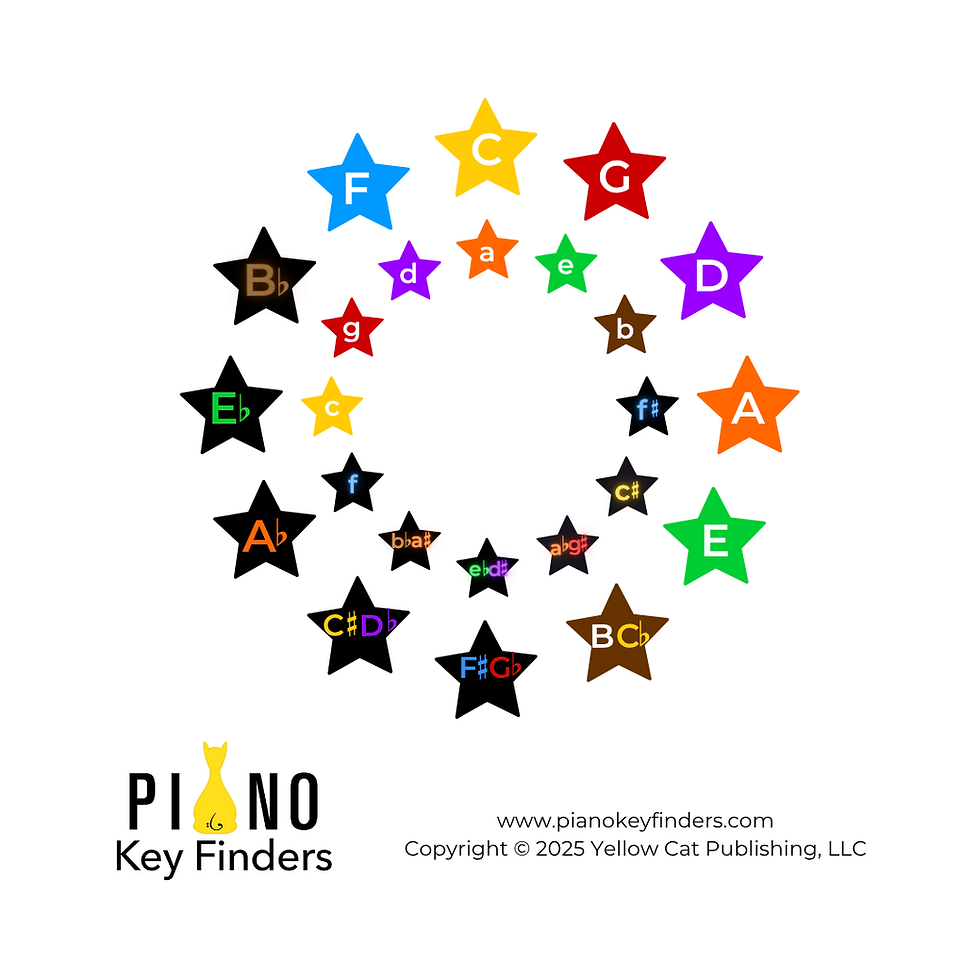July's Circle of 5ths
- Sarah Lyngra

- Jul 3
- 2 min read
Stars! I was going to do fireworks, but then I had a student who wanted to learn Twinkle Twinkle Little Star, so I'll save the fireworks for New Year's.
The student after her is a minor monster. He loves playing anything in minor keys, the scarier the better.

The end result is two star circles, and lots of twinkle little stars in all keys major and minor.
When I put this together I was trying to decide do we go relative minor or parallel? What would you do? I ended up going with the relative. C major and a minor are combined rather than C major and c minor.
I did this for 2 reasons. Firstly, I thought it sounded more dramatic than using the parallel minor, but also, by the time you have played twinkle in one of the keys, you are starting to learn the keys of the the scale. Students are using both hands and playing all of the different keys which make up the notes of a scale. The more they do this, the more they familiarize themselves with the geometry of the keys.
The cards that I use when teaching this are from the double sided set, specifically the major and minor I-IV-V7 cadence cards:
In the sheet music, the chord symbols are color coded to go with chords in the piece. This is helpful when teaching students with less experience, or online students. For some it's easier to find a chord by color in the beginning.
What I've noticed, after a time, students are able to play the piece from memory, then transpose from memory as well. Once this starts happening, I have them create their own versions of the piece, and I tie it back to the Mozart variations.
The improv element is especially important for teachers. Honestly, it's a bit mind-numbing to play twinkle in every lesson for a week or two, so I change things to keep it fresh for me.
This is a starting point for so many other things, and it gets students playing more, which is the point.
Happy Playing!
Sarah



Comments